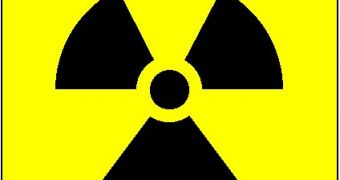Radiation detectors are devices used to detect, track, and/or identify high-energy particles, such as those produced by nuclear decay, and are used by most US law enforcement agencies to scan for X-rays and gamma rays emitted by sources like nuclear explosive dives, dirty bombs and other illegal devices.
However, even the most modern are heavy, bulky, and must be operated at very cold temperatures using expensive liquid nitrogen, all these factors making them hard to operate and to maintain.
A new technique for radiation detection has been created by scientists at the U.S. Department of Energy's Brookhaven National Laboratory, with funding from DOE's National Nuclear Security Administration, which can greatly improve the performance of today's radiation detecting devices.
These devices work by detecting electrons-holes pairs (the holes being in fact vacancies left by liberated electrons) when ionizing radiation or high-energy particles strike the detector crystal. The free electrons and holes, that flow towards the anodic and cathodic electrodes at either end of the detector, generate a signal that can be measured and recorded.
The new devices overcome of the biggest challenges of this method, the fact that holes travel a very short distance before getting trapped by defects in the crystal and the fact that not all of them arrive at the anode, which leads to a subsequent inaccuracy in radiation measurements.
Thus, they are more efficient, practical and cost-effective than existing detectors with similar performance, and can detect radiation with increased accuracy. "Improving the performance of radiation detectors could improve the efficiency and accuracy of cargo screening at U.S. ports," said Brookhaven physicist Aleksey Bolotnikov, one of the inventors.
"Together, these techniques enhance the energy resolution and efficiency of these detectors. In practical terms it means that the improved devices will be able to detect more minute quantities of radiation, detect radioactive materials more quickly or from greater distances, better identify the source of the radiation, and distinguish illicit sources of concern from common naturally occurring radioactive materials," Bolotnikov said.

 14 DAY TRIAL //
14 DAY TRIAL //